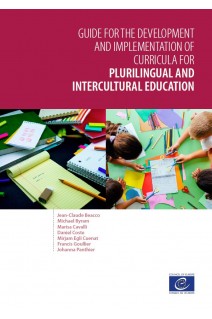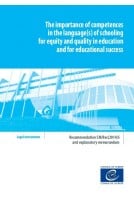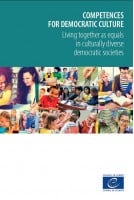



Understanding and experiencing the diversity of languages and cultures is both an aim of and a resource for quality education
Plurilingual and intercultural education is a response to the needs and requirements of quality education, covering the acquisition of competences, knowledge and attitudes, diversity of learning experiences, and construction of individual and collective cultural identities. Its aim is to make teaching more effective and increase the contribution it makes both to school success for the most vulnerable learners and to social cohesion.
This guide is intended to facilitate improved implementation of the values and principles of plurilingual and intercultural education in the teaching of all languages – foreign, regional or minority, classical and language(s) of schooling.
Foreword to the first edition
Foreword to the second edition
Executive summary
CHAPTER 1: Designing curricula for plurilingual and intercultural education
1.1. Aims and values of plurilingual and intercultural education
1.2. Curriculum design
1.3. Some key concepts relating to plurilingual and intercultural education
1.4. A curriculum geared to plurilingual and intercultural education
1.5. Ways of bringing plurilingual and intercultural education into the curriculum
CHAPTER 2: Establishing points of convergence and encouraging cross-cutting links between all the languages taught at school
2.1. The proficiency scales of the CEFR and pupils’ linguistic profiles
2.2. Strategies
2.3. Reflexivity
2.4. Reflexivity and grammatical activities
2.5. Norms and variation
2.6. Similarities and differences between languages
2.7. Learning mediation
2.8. Textual genres
2.9. School subjects and cultural diversity
2.10. Assessment in plurilingual and intercultural education
2.11. Teacher training
CHAPTER 3: Organising a curriculum for plurilingual and intercultural education
3.1. Organising curricula for plurilingual and intercultural education at the various levels of education
3.2. Developing and implementing a curriculum for plurilingual and intercultural education
3.3. Analysing learners’ needs in their sociolinguistic and educational contexts
3.4. Establishing objectives in a cross-cutting approach
3.5. Specifying content in a cross-cutting approach
3.6. Variable methods of organisation (in terms of time)
3.7. Adopting different approaches according to target groups and situations
3.8. Curriculum scenarios
3.9. Other possible uses of the scenarios – other prototypical cases
Conclusion
APPENDICES
Appendix I: Outline for a survey on social perceptions of languages and how they are dealt with in the curriculum
Appendix II: Outline for a local language survey
Appendix III: Outline for specification of teachers’ competences with a view to plurilingual and intercultural education
Appendix IV: Instruments and resources for developing and implementing curricula for plurilingual and intercultural education
Appendix V: Learning methods and activities
Appendix VI: Taking into account the linguistic and cultural repertoire of allophone pupils
Télécharger un extrait (1000)




Understanding and experiencing the diversity of languages and cultures is both an aim of and a resource for quality education
Plurilingual and intercultural education is a response to the needs and requirements of quality education, covering the acquisition of competences, knowledge and attitudes, diversity of learning experiences, and construction of individual and collective cultural identities. Its aim is to make teaching more effective and increase the contribution it makes both to school success for the most vulnerable learners and to social cohesion.
This guide is intended to facilitate improved implementation of the values and principles of plurilingual and intercultural education in the teaching of all languages – foreign, regional or minority, classical and language(s) of schooling.
Attention, en vertu de nos conditions générales de vente, l'achat des PDF/epub est réservé aux particuliers.
